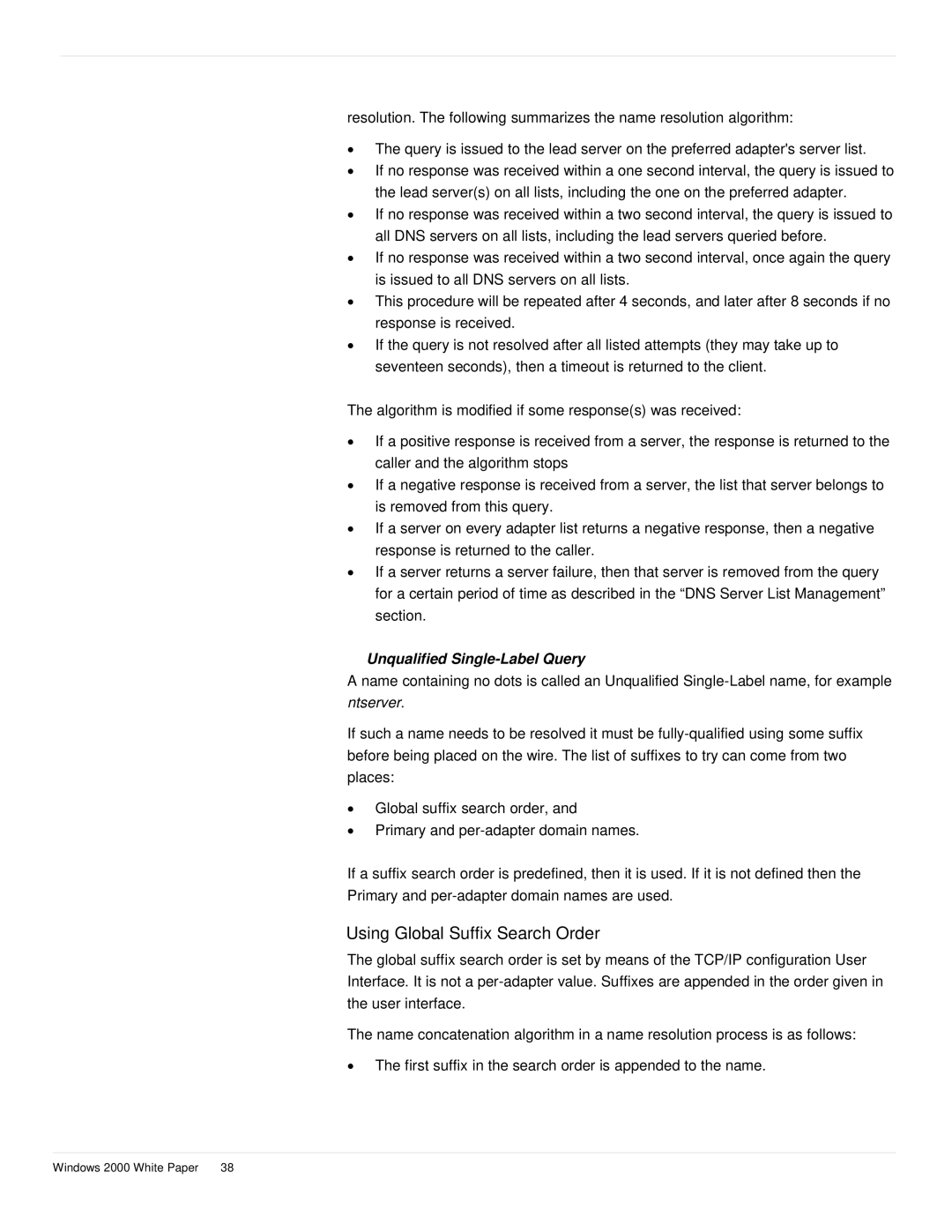
resolution. The following summarizes the name resolution algorithm:
•The query is issued to the lead server on the preferred adapter's server list.
•If no response was received within a one second interval, the query is issued to the lead server(s) on all lists, including the one on the preferred adapter.
•If no response was received within a two second interval, the query is issued to all DNS servers on all lists, including the lead servers queried before.
•If no response was received within a two second interval, once again the query is issued to all DNS servers on all lists.
•This procedure will be repeated after 4 seconds, and later after 8 seconds if no response is received.
•If the query is not resolved after all listed attempts (they may take up to seventeen seconds), then a timeout is returned to the client.
The algorithm is modified if some response(s) was received:
•If a positive response is received from a server, the response is returned to the caller and the algorithm stops
•If a negative response is received from a server, the list that server belongs to is removed from this query.
•If a server on every adapter list returns a negative response, then a negative response is returned to the caller.
•If a server returns a server failure, then that server is removed from the query for a certain period of time as described in the “DNS Server List Management” section.
Unqualified Single-Label Query
A name containing no dots is called an Unqualified
If such a name needs to be resolved it must be
•Global suffix search order, and
•Primary and
If a suffix search order is predefined, then it is used. If it is not defined then the Primary and
Using Global Suffix Search Order
The global suffix search order is set by means of the TCP/IP configuration User Interface. It is not a
The name concatenation algorithm in a name resolution process is as follows:
•The first suffix in the search order is appended to the name.
Windows 2000 White Paper | 38 |
